Earlier this season, I have successfully taken my high-power 100 watt portable HF station on a number of adventures – both short outings not too far from home and longer road trips. Inspired by the spirit of field radio, I started to think about a more compact HF station that I could take with me when I am not driving. This is how I became a happy owner of an Elecraft KX2 transceiver and a compact lightweight random wire antenna – PackTenna mini. The only caveat was to decide how to deploy the antenna. The quest for an air travel friendly mast ended with a purchase of SOTAbeams Tactical Mini – and I never looked back!
After making sure that the whole setup works flawlessly during a few local park activations, I took my ultraportable station on a trip to Michigan. Working from the top of the dunes overlooking one of the Great Lakes was definitely a highlight of the trip! But – time has come for my setup to do just what I assembled it for: I was flying for a work trip to California, and some radio fun was in the plans for a short free time that I had there.
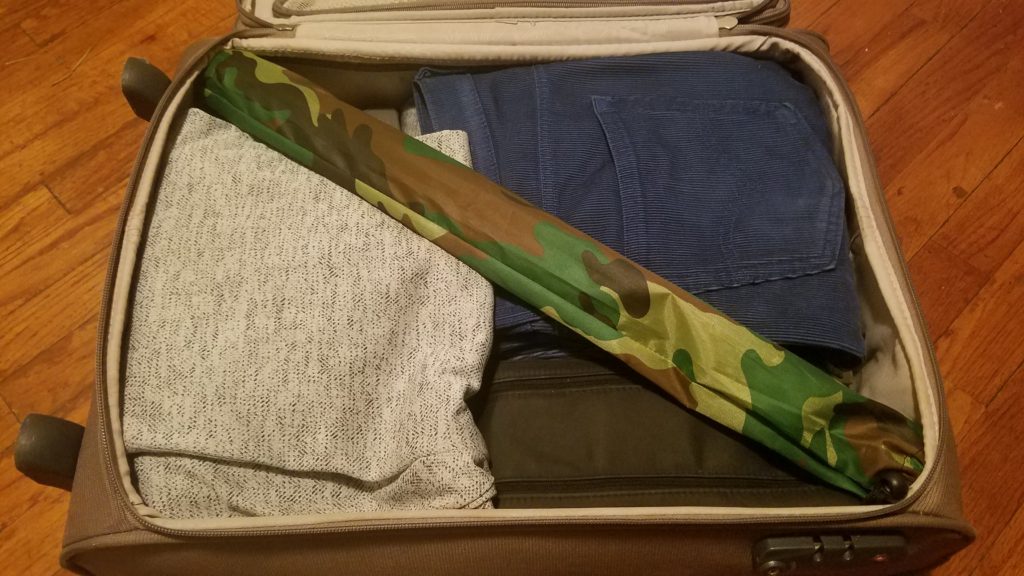
When I looked for a perfect mast to complement my travel HF station, the main requirement was for it to fit into my carry-on bag. As you can see – my mast of choice perfectly does it, taking almost no space and weighing only 1.5 lbs! Sure enough though, the TSA officers in the airport became quite interested in it during my very first attempt to go through security. After a very brief explanation that it’s almost the same a very long fishing pole, they were satisfied and let me through.
After checking in to my hotel, the only thing I needed was to take the mast out of my carry-on bag and put it in my backpack – and I was all set to go! Together with the transceiver, antenna, mast and some accessories, there was plenty of space left in the backpack. It’s really impressive how compact, lightweight, yet able in terms of their on-air performance those little rigs can be!
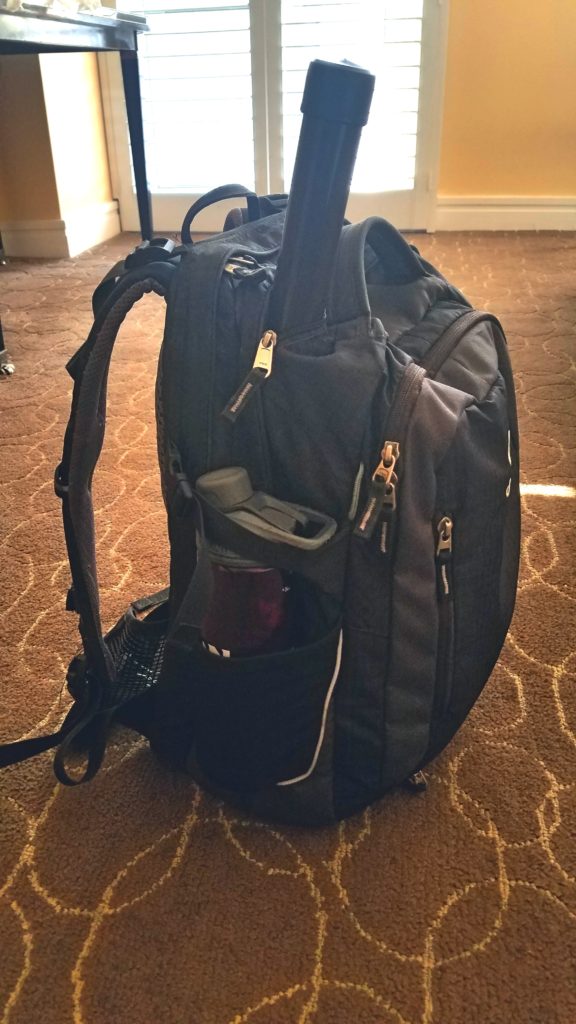
I arranged to meet with an old friend of mine before my park adventure – thus I ended up having a very brief time for the activation itself. After our meeting, she dropped me off right st the park gate, which saved me some time. The park closes at dusk – thus, factoring in the time for hike in and hike out, I had about an hour on the air.
Santa Monica Mountains National Recreation Area (POTA designator K-0648) is a very large park that spans dozens of miles to the northwest of Los-Angeles. For my operation that day I chose an overlook located at one of the highest points of the Runyon Canyon Park that is part of the recreation area. It is a relatively short, thus not too tiring hike along the Inspiration Point Trail that takes about 15-20 minutes from the park entrance, with the elevation gain of approximately 450 ft.
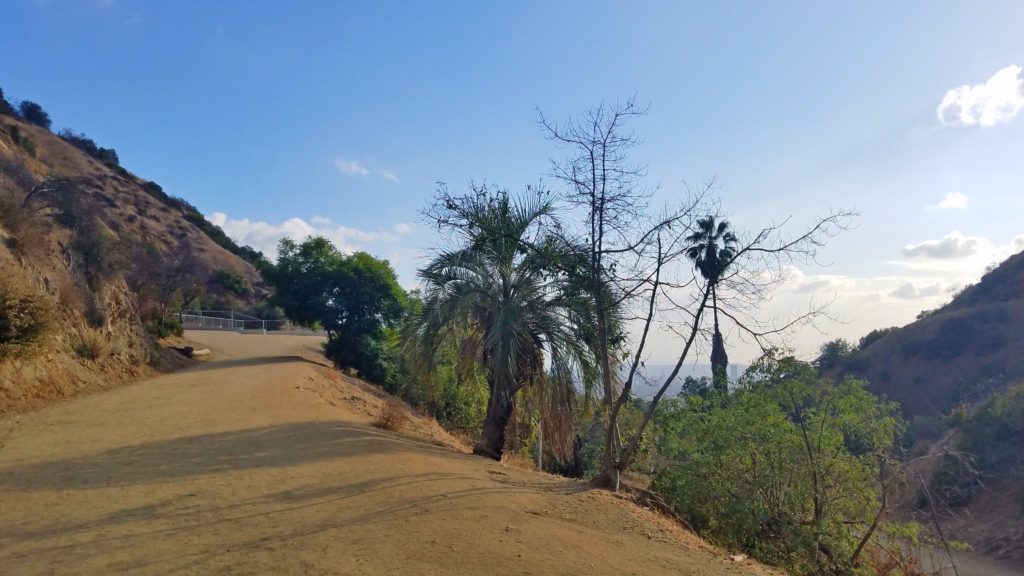
The trail starts as a wide road that is slowly going up, occasionally offering beautiful views of the greater Los Angeles. It then becomes narrower and much steeper at times, climbing up to the flat area overlooking the Hollywood sign and the Griffith observatory on the east side. After reaching my destination and taking a little few-minute break, I deployed the station. As usual, it only took just minutes – I used the AED box pole to attach the mast, and a tent stake stuck between the rocks to secure the antenna wire at the ground level. The unun part was attached to the bench with a bungee cord.

I powered up the radio and started tuning along on the 20 meter band. My first surprise was that I was able to hear station from Japan! Well, maybe I shouldn’t have been so surprised since I was on the West Coast, but I never really heard a JA station before – let alone with such a modest setup. There were no active POTA spots, thus I found a frequency and started calling CQ.
From the first 10-15 minutes of calling I understood that this won’t be an experience like my latest activation of a local park last week, or some other successful sessions where I had decent pileups. I only worked 10 watts, and this signal had to jump over the Rockies and travel quite far, sometimes across the whole country! However, I was able to log 12 contacts, which ensured a successful activation. I used the VLS Logger again – this time being more accurate with initial configuration – and again was very pleased with the ease and convenience of using this app.
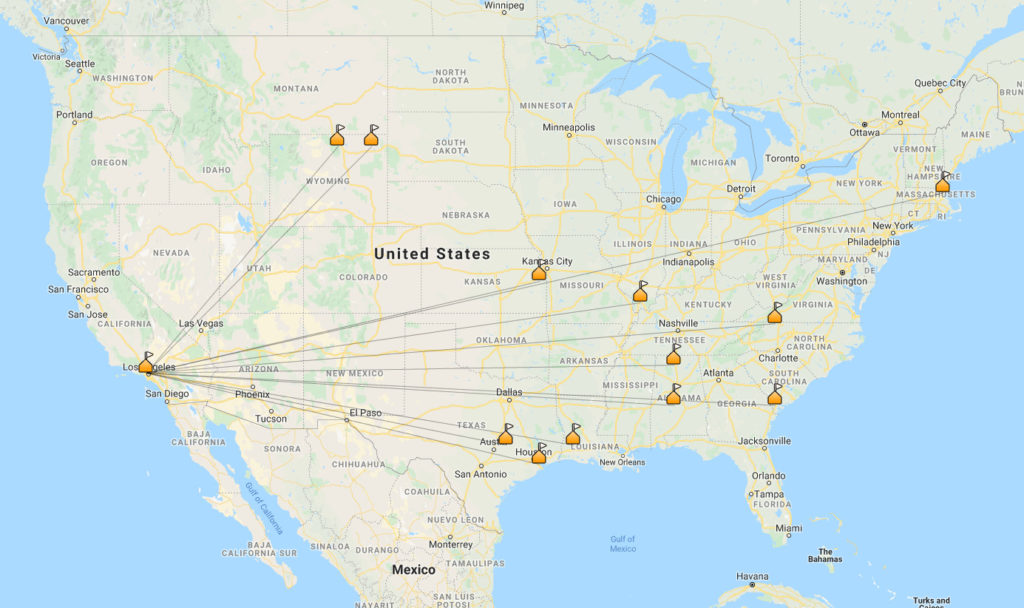
I didn’t spend enough time on the air to get a feeling of how the bands were doing that day – one this that I noted is that it was quite noisy. Most probably, however, it was because of the proximity to a very large city. Nevertheless, one can see from the QSO map that the coverage is pretty impressive for my contacts, spanning nicely through the center and all the way to the East Coast of the US. The skip on 20 meters appears to be about 1000 miles, which is fairly consistent with my prior observations. Unfortunately, I did not have much time to try 40 meters – otherwise I could’ve scored some closer contacts with the stations along the coast.
Another important part of this activation was being an ambassador of our hobby. I usually activate from relatively remote locations, where I come across very few people, if any at all. This time, however, I operated from a fairly busy trail – and the plateau where I set up my station was also a popular spot for the hikers to stop and catch their breath. Thus, I had quite some people asking questions, engaging in a conversation, or listening to me working on the air. Of course, this took some precious time (that I didn’t have too much of!) off the air – but outreach is also an important aspect of amateur radio, and as a long-time public outreach activist I could not ignore it.
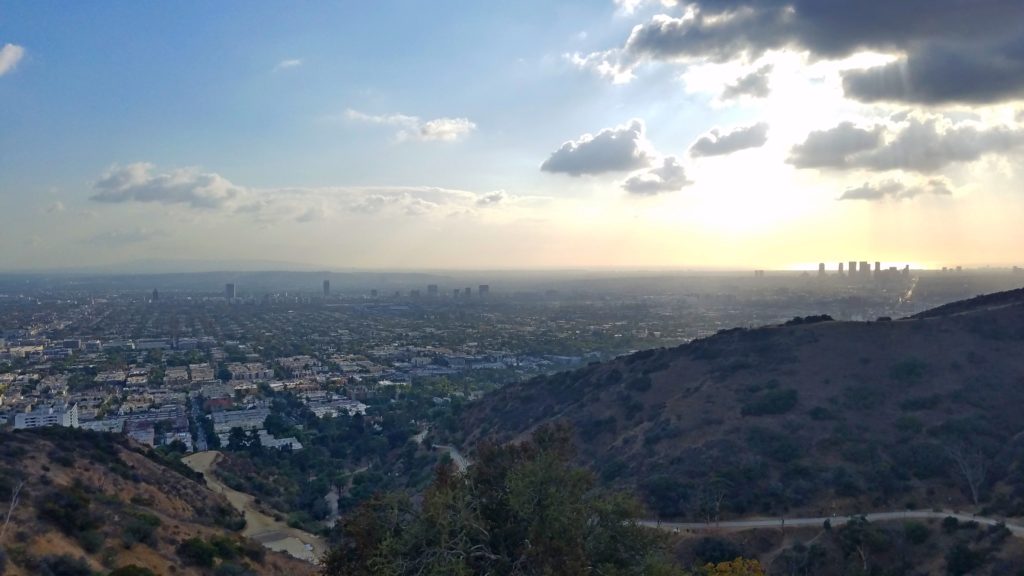
It was a quite busy work trip, but I am very happy that I had some quality time to spend exploring a nearby park, getting on the air from a new place (and my 5th state!), reach out to people who showed interest in the hobby of amateur radio. I also had an opportunity to connect with two good friends whom, unfortunately, I don’t see all that often, but who mean a lot to me. Oh, did I mention that the weather was gorgeous? 🙂 Those were certainly several great days with quite a few moments to remember!